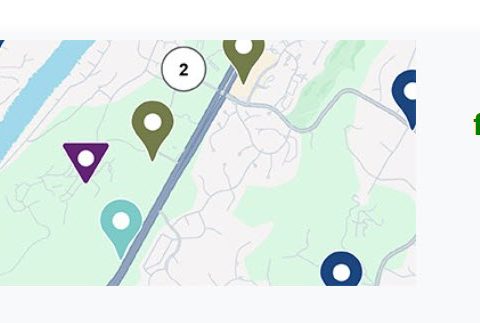by Brendan Gibbons, Assistant Manager
Greater Edwards Aquifer Alliance
Helotes Canyon northwest of San Antonio has seen its share of small-scale development, but the water in Helotes Creek still flows clear and plentiful as it makes its way downstream toward the Edwards Aquifer Recharge Zone.
But with developer Lennar Homes planning the canyon’s densest development yet — a 3,000-home subdivision on a 1,160-acre property — this could all change in only a few years.
Could Helotes Creek become yet another dead Hill Country stream, choked with algae and sediment, bearing greater flooding risk, and channeling stormwater runoff from roads and lawns into the Edwards Aquifer?
Since last year, Lennar Homes has been planning its development for the Guajolote Tract, one of the largest undeveloped ranches left in Helotes Canyon. Lennar hasn’t yet said how it plans to deal with the sewage generated by 3,000 new households, but GEAA anticipates the proposal of a wastewater treatment plant that would likely discharge either to Helotes Creek or Chiminea Creek, one of its main tributaries.
Wastewater treatment plants are the ideal sewage treatment proposal in some areas, but they’re just plain wrong for Helotes Canyon.
The area is one of the few remaining Bexar County watersheds over the Edwards Aquifer with no sewage treatment plants.
In a 2020 city-funded study that considered a range of possible wastewater alternatives along Helotes Creek, Southwest Research Institute scientists concluded that any new wastewater infrastructure, regardless of type, would significantly reduce the quality of water recharging the aquifer.
Not only that, but the blanketing of all this natural ranch land with asphalt, concrete, and rooftops will inevitably increase downstream flooding, affecting property owners who have lived in Helotes Canyon for generations.
As recently as last month, the Greater Edwards Aquifer Alliance has been working to hold Lennar Homes accountable for increased flooding caused by another of its Hill Country projects.
In Bulverde, where Lennar recently completed its 4S Ranch development, GEAA and Bulverde Neighborhood Alliance (BNA) had in 2019 filed a notice of intent to sue in an effort to get Lennar to comply with a 2016 agreement to avoid flooding its neighbors and protect a large recharge cave on the property.
The agreement was necessary because, as with the Guajolote Tract, Lennar wanted an overly dense development for the area.
In the settlement deal, Lennar agreed to contain stormwater runoff to 90% of pre-development levels. Annalisa Peace, GEAA’s executive director, had expressed hope at the time that 4S Ranch could one day become a showcase of responsible Hill Country development.
Then came a heavy rainstorm in October 2019, when a deluge of stormwater laden with mud and construction debris flowed off of 4S Ranch onto a neighboring property. Clearly, Lennar hadn’t followed the agreement and reduced its stormwater runoff. BNA also caught the developer trying to sell lots in a buffer zone meant to protect the cave, another violation of the agreement.
Last year, it became even more clear that Lennar hasn’t kept up its end of the bargain.
A consultant hired by BNA determined that the volume of stormwater flowing off of 4S Ranch onto neighboring properties has only gone up, not down, according to the Dec. 14, 2021, report by engineer Freese and Nichols. Last month, GEAA’s attorney sent a letter to Lennar notifying the developer of its obligations to meet the terms of its agreement.
Lennar has clearly demonstrated that it’s unwilling to take simple steps to avoid flooding its neighbors.
That’s another reason why GEAA is recommending that the developer create a plan with a density that’s more appropriate for the Guajolote Tract. With residential lots large enough to accommodate septic systems, there would be no need for a wastewater treatment plant discharging to Helotes Creek.
Principles of environmentally conscious growth are embedded in San Antonio’s North Sector Plan, and the Guajolote Tract can’t be developed to Lennar’s specifications without an amendment to that plan by City Council.
Currently, the North Sector Plan designates that Guajolote Tract as “country” for residential land use, meaning “large tract detached single-family housing; served by well water and septic systems; lots greater than 10 acres.” Lennar hasn’t yet submitted a request for a change, but such a request is all but inevitable at this point.
When Lennar Homes requests a plan amendment for the Guajolote Tract, city council should deny the request. The council can either stand with the commitments made in the North Sector Plan, or it can allow businesses’ interests to undermine that plan, risking the health of our water supply.
Crafting a document like the North Sector Plan is no easy task. It requires dozens of people, many of whom vehemently disagree with the others’ notions of the best possible future of our community, to sit in a room together for hours and reach compromise. That’s what happened in 2010, when City officials and stakeholders sat down to haggle out the document that would outline the next 35 years of growth on the North Side.
San Antonio’s North Side is its fastest-growing sector, but it’s also the most environmentally sensitive area when it comes to the security of the city’s drinking water supply.
Developers are paving over and upstream of the delicate Edwards Aquifer Recharge Zone, where rain that falls on the surface flows through cracks, holes, and fractures into the groundwater below.
Because of these conduits and its location just west of San Antonio, aquifer scientists estimate that Helotes Canyon is one of the most significant recharge areas for the San Antonio Water System’s Edwards Aquifer supply.
The North Sector Plan included safeguards meant to discourage rampant, overly dense development over the Recharge Zone. Volunteers who served on the stakeholder groups, including representatives of the building and development trades, agreed that growth could be managed responsibly, without sacrificing clean drinking water.
Unfortunately, the city has allowed developers to repeatedly undermine the vision of the North Sector Plan.
Since 2010, City Council has approved 85 changes to that plan, proposed by developers who would prefer to not comply with these rules. Read this excellent report by GEAA researchers Juliet Sikorski and Cheyanne McDaniel to learn more about this trend.
What’s the point of spending all this time and effort creating a North Sector Plan, then turning around and undermining it through amendments?
This type of behavior by the government neuters public participation and increases civic apathy. Why would anyone volunteer their time and input seeing a plan all the way through City Council approval, only to later see that plan undermined?
On Jan. 3, GEAA and nine of its member groups, including the Scenic Loop – Helotes Creek Alliance representing Helotes Canyon residents, sent a letter urging City Council to deny any attempt by Lennar to amend the North Sector Plan in a way that could make it easier to cram a dense subdivision onto the Guajolote Tract.
We think it’s important that developers see how their actions will likely affect their downstream neighbors, not to mention the millions who rely on the aquifer for clean drinking water.
City council still has an important opportunity to honor the commitments made in the North Sector Plan. Councilmembers will soon face a choice, one that will determine the destiny of the Helotes Creek watershed.
The Greater Edwards Aquifer Alliance (GEAA) is a 501(c)(3) nonprofit organization that promotes effective broad-based advocacy for protection and preservation of the Edwards Aquifer, its springs, watersheds, and the Texas Hill Country that sustains it.
The Edwards Aquifer is the source of the largest springs in Texas and the sole source of drinking water for more than 1.5 million Central Texas residents.




